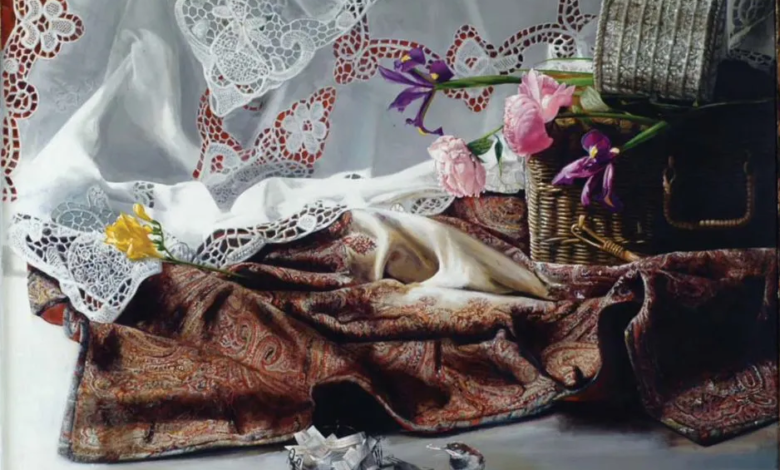Acrylic paints create a feeling of home



Acrylic paints create a feeling of home. A group exhibition of Iranian artists. The show was called A Letter. The artist observes: Each of us is trying to balance our roots and our aspirations. The juggling act grows more dangerous in our age of globalization, where our fate is often far from home.
Lost sight
National citizenship, displacement, and movement weigh slowly on our present knowledge. We are experiencing images of displaced citizens followed by apocalyptic narratives from our would-be business leaders. The global message prevents our beloved ideas of social order and family security. Yet paradoxically, the overload of shocking images and overwhelming headlines only serve to cloud our senses and shut down our emotions.
Andy Warhol’s famous Death and Disaster series, which includes works with repeated images of car accidents and other catastrophes (taken from photojournalistic sources), explored the dampening effect that the media has on the social psyche. Unfortunately, those words, and the elitism they engendered, only moved our collective mind away from a place of compassion. Having a genuine heart in the face of a troubled world or a real concern for the well-being of the human community at large requires a vulnerable posture that can be unhelpful.
Perhaps it is better to take refuge in ironic positions, nihilistic reflections, intelligent and philosophical arguments. In a sense, we are all displaced: glassy faces, addicted to digital, without contact with the world, with each other, and, above all, the emotional visits that sculpt our souls.
Sensual painting
Sensual painting, by its visceral communicative nature, can offer a safe path back to humanity’s messy and imperfect state. Esmaeilipour’s paintings offer this path; they initially advertise a hyper-realistic simulation that, upon closer inspection, resembles the implausible scenarios and displaced objects of dreams and hallucinations. His images, ranging from the enigmatic to the surprisingly incongruous, symbolize our current human condition, what the French call a pervasive feeling of lack of inhabiting a fragmented time and place disconnected from its roots.
Be an artist
Esmaeilipour remembers his first encounter with painting; when he was still a teenager, he came across a reproduction of Vincent van Gogh in a book on Van Gogh’s letters. It was a self-portrait. He wanted to know how to paint this picture. But my people were in battle, and I was soon drafted into public service. Years later, Van Gogh appeared to me in a vision: he told me he had to chase my anger.
I didn’t know where to start. Finally, I found a good mentor, who introduced me to various media and experts. At first, I got hooked on Andrew and Winslow and started concentrating on watercolor. I was operating a farm to help myself. My original display was of watercolors depicting the things around me. Stables and cows were my first models.
Discovering acrylic


Requiring to work on a bigger scale than he could manage with watercolor, Esmaeilipour began testing with oil, but he wasn’t pleased with the effects. I was watching for something related to watercolor, but more important. I mean, 27 years ago in Iran with no material or the Internet. Everything was checked, and if you were fortunate adequate to find something, it was high and out of your organization. Eventually, an art supply secured small sets of acrylics in six-color cases but could not store any knowledge on handling them. Esmaeilipour saw them water-soluble and quick-drying claims he knew from his task with watercolors.
I started looking everywhere for acrylic paints. When family and friends traveled overseas, I asked them to bring me acrylics. I filled all the profits from my part solo exhibition on acrylics! When I went in 1998, preparing art stocks just got a lot easier. Today I work with most acrylic brands; my favorite is gold because the color is so vibrant, the value is rich, and the color doesn’t change when it dries.
Painting of all genres
Poetic realism finds a character in three distinct genres: original still life, fictional portraits, and paintings of expressionist cool drawings. Across classes, signature and secret order of objects and elements offer projecting visual design with symbolic significance and reported intent. His figurative paintings, which the artist calls Immigrant Series, employ parts of the picture in the room to acrylic color.
Also, read about Which is the Best Green Tech for Your Home?
Immigrant series
The phrase being in a bubble suggests a sense of secure containment and removal, signifying a rarefied socioeconomic status. Conversely, a drop can also indicate an inflated rating, a false and unstable rating. Immigrant no. 9 mentions both allusions. A small house paired with the word NOT floats in a bubble. The juxtaposition strikes a moving chord. The word YES flows in an infinite color field of deep gray; it is a typical statement of the out-of-the-bubble illness to most of us are familiar with notions of life.
The boy seems paralyzed by another bubble suspended just beyond his reach; huddled inside are a couple of mysterious figures: pictures of the child’s parents or ancestors? Commenting on Esmaeilipour’s Immigrant series, Pamela Rizk, a University of Singapore professor who writes on art, says: The immigrant is an element that remains unbalanced, intrinsically separated from its environment. Esmaeilipor captures both the unease and the hope that come with this situation.
Also Watch: Toddlers learning
The commentary of everyday
Themes of spatial, temporal, and geographical dislocation reappear in Esmaeilipour’s still life. China Money Bag, Through Time, and Package # 3 combines seemingly disparate objects to impart cognitive dissonance and suggest a new reality. One remembers a ready-made by Marcel Duchamp or still life by Giorgio de Chirico. In both cases, the artists removed familiar objects from their everyday context and thus imbued them with new and symbolic meanings.
Also Read: Knowledge is power


